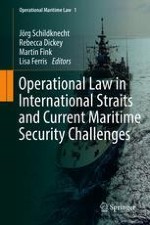This book addresses a wide range of contemporary operational maritime law issues across the spectrum of operations. It provides sophisticated analyses and insights, and offers new interpretations of topics that are directly relevant for contemporary naval operations.The book examines unresolved legal issues in order to provide guidelines for conducting maritime operations, and also offers reference material for general education on the law of naval operations. Further, it serves as a comprehensive resource for operational doctrine and military planning, and presents an approach to dealing with multiple legal issues that demonstrates how modern military operations at sea can legally be executed. Focusing on operational and tactical topics, it is a valuable addition to the bookshelves of military lawyers and operators alike.
